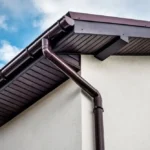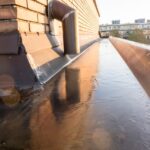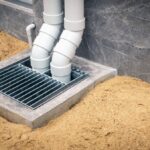For every homeowner, maintaining a leak-free roof is essential. A compromised roof can lead to multiple issues, from structural damage to mold growth. Knowing how to check attic for roof leaks is a crucial skill that can save you from expensive repairs and unnecessary hassle.

1. Understanding the Importance of Attic Inspection
The attic acts as a barrier between the living space and the roof. It is often the first place where roof leaks manifest, making it an ideal spot for inspection. Frequent checks can help identify potential leak sources and address them before they escalate.
2. Preparing for the Inspection
2.1. Gather Necessary Tools
To efficiently detect leaks, equip yourself with a flashlight, a notebook for recording observations, and protective gear such as gloves and a mask.
2.2. Safety Precautions
Prioritize safety by ensuring adequate lighting and wearing proper shoes. Be cautious of loose insulation or exposed nails that might cause harm.
3. Signs of a Roof Leak
3.1. Water Stains on the Ceiling
One of the most evident signs of a leak is water stains on attic ceilings or walls. These yellowish-brown spots are a clear indication of water intrusion.
3.2. Damp Insulation
Inspect the insulation for moisture. Damp insulation is a strong indicator of a nearby roof leak, potentially compromising its effectiveness.
3.3. Mold Growth
Mold thrives in moist environments. Identifying mold patches in your attic might signal a roof leak, necessitating immediate attention.
4. Step-by-Step Roof Leak Inspection
4.1. Examine the Roof Decking
Start by examining the deckingthe wooden surface beneath the roof shingles. Look for darkened spots indicating moisture absorption.
4.2. Check for Light Holes
Turn off attic lights and observe if any outside light infiltrates through the roof. This can signal small holes or gaps, paving the way for leaks.
4.3. Look for Sagging Areas
Sagging areas in the attic ceiling can hint at underlying water damage, often stemming from prolonged exposure to leakage.
5. Addressing the Leaks
5.1. Temporary Fixes
If a leak is identified, implement temporary fixes such as tarping the affected area until professional repairs can be made.
5.2. When to Contact Professionals
While minor fixes can be undertaken independently, significant damage requires the expertise of roofing professionals to ensure comprehensive repair.
6. Preventative Measures for Future Leaks
6.1. Regular Inspection
Routine attic inspections can preemptively identify issues. Consider scheduling inspections biannually or after severe weather events.
6.2. Maintain Roofing Components
Regular maintenance, like clearing gutters, can enhance the roof’s longevity. You can learn more about maintaining your roof by visiting Cleaning Gutters.
6.3. Invest in Quality Roofing Materials
Use high-quality materials when repairing or replacing your roof. Materials of premium quality have a longer lifespan, reducing the likelihood of leaks.
7. Long-term Benefits of a Well-maintained Roof
A well-maintained roof ensures structural integrity while enhancing the property’s value. It not only safeguards from unpredictable weather but also contributes to energy efficiency by better insulation.
Implementing regular roof maintenance practices, like those suggested in this roof maintenance guide, can prolong the lifespan of your roofing system.

FAQ Section
1. How often should I check my attic for roof leaks?
We recommend inspecting your attic for leaks at least twice a year and after severe weather events.
2. What tools are necessary for an attic inspection?
A flashlight, gloves, mask, and notebook for observations are essential tools for attic inspections.
3. Can roof leaks affect energy efficiency?
Yes, roof leaks can compromise insulation, leading to increases in heating and cooling costs. Addressing leaks promptly can mitigate such issues.
This article contains affiliate links. We may earn a commission at no extra cost to you.







